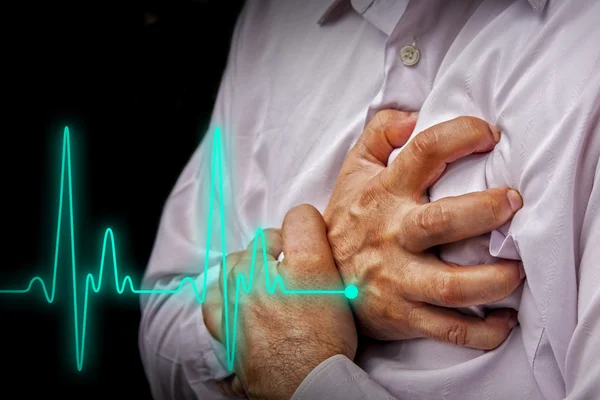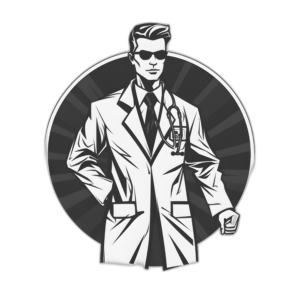Introduction:

heart attack is a sudden and potentially fatal condition that occurs when the heart suddenly stops pumping blood effectively. It is a medical emergency that requires immediate intervention to prevent permanent damage to vital organs, including the brain. Understanding the causes, symptoms, emergency response, and preventive measures for cardiac arrest is crucial for increasing survival rates and promoting heart health.
Causes and Risk Factors:
heart attack can be caused by various factors, with coronary artery disease (CAD) being the most common underlying condition. CAD occurs when the coronary arteries, which supply blood to the heart muscle, become narrowed or blocked due to the buildup of plaque. Other causes of cardiac arrest include heart rhythm abnormalities (arrhythmias), heart attacks (myocardial infarctions), drug overdose, drowning, trauma, and electrical shocks. Certain risk factors increase the likelihood of experiencing cardiac arrest, including a history of heart disease, a family history of cardiac arrest, advanced age, smoking, obesity, high blood pressure, and diabetes.
Symptoms:
Recognizing the symptoms of heart attack is vital for immediate action. The primary symptom is a sudden loss of consciousness, where the person collapses and becomes unresponsive. Breathing may also be absent or abnormal, characterized by gasping or irregular breaths. Additionally, there may be no pulse or a weak pulse. Skin color may turn pale or bluish due to insufficient oxygen circulation. It is crucial to remember that cardiac arrest can occur without any prior warning signs.
Cardiopulmonary Resuscitation (CPR):
Cardiopulmonary resuscitation (CPR) is a life-saving technique that should be initiated immediately when someone experiences cardiac arrest. CPR involves a combination of chest compressions and rescue breaths to manually circulate oxygenated blood to the brain and other vital organs. The American Heart Association (AHA) recommends performing high-quality CPR with a compression rate of at least 100-120 compressions per minute and a compression depth of about 2 inches.
Automated External Defibrillator (AED):
The use of an automated external defibrillator (AED) alongside CPR significantly increases the chances of survival. AEDs are portable devices that analyze the heart’s rhythm and deliver an electric shock if necessary to restore a normal heart rhythm. These devices are user-friendly, providing voice prompts and visual instructions to guide users through the process. Prompt access to an AED can be critical in improving survival rates, and they are commonly available in public places such as airports, shopping malls, and schools.
Emergency Medical Services (EMS):
Activating emergency medical services (EMS) by dialing the emergency number, such as 911, is crucial during a cardiac arrest event. EMS personnel are trained to provide advanced life support measures, including defibrillation, airway management, and administration of medications. They possess the necessary equipment and expertise to stabilize the patient and provide care during transportation to the hospital.
Hospital Treatment:
Following successful resuscitation, patients are admitted to the hospital for further evaluation and treatment. The medical team will assess the underlying cause of the cardiac arrest and provide appropriate interventions. This may include medication administration to stabilize the heart’s rhythm, the insertion of cardiac devices such as pacemakers or implantable cardioverter-defibrillators (ICDs), and coronary interventions such as angioplasty to address underlying blockages in the coronary arteries.
Post-Cardiac Arrest Care:
Patients who have experienced cardiac arrest require specialized care in the intensive care unit (ICU). They may undergo therapeutic hypothermia, a process that involves cooling the body to lower temperatures, to protect the brain and improve neurological outcomes. The medical team closely monitors the patient’s vital signs, administers medications to support heart function, and addresses any complications that may arise.
Prevention:
Preventing cardiac arrest begins with maintaining a healthy lifestyle. Regular physical exercise, a balanced diet, and maintaining a healthy weight are essential. Avoiding tobacco and excessive alcohol consumption are also important factors. It is crucial to control risk factors such as hypertension, diabetes, and high cholesterol levels through proper management and medication as prescribed by healthcare professionals. Additionally, learning CPR and encouraging others to learn it as well can make a significant difference in saving lives during cardiac emergencies.
Conclusion:
Cardiac arrest is a serious medical emergency that requires immediate action. Understanding the causes, recognizing the symptoms, performing CPR, utilizing AEDs, and activating emergency medical services are crucial steps in increasing the chances of survival. However, prevention plays a vital role in reducing the occurrence of cardiac arrest. By adopting a healthy lifestyle, managing risk factors, and promoting awareness of cardiac health, we can strive towards reducing the burden of cardiac arrest and enhancing the well-being of individuals in our communities.

